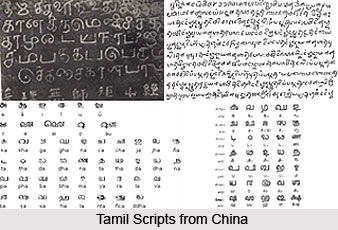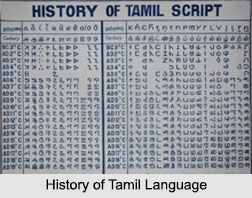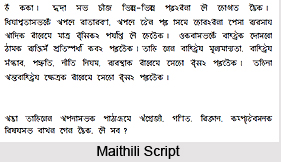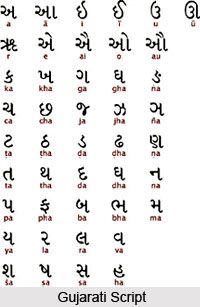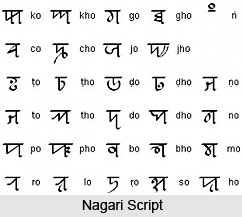The term Indus script is also referred to as Harappan script, denoting to short twines of symbols, related to the Indus Valley Civilization. These twines were in use during the Mature Harappan period, within the 26th and 20th centuries B.C. In spite of umpteen assays at decipherments and claims, the Indus script as yet remains undeciphered. The fundamental language that has been employed in the script is unknown and the deficiency of a bilingual makes the decryption implausible and pending to momentous new breakthroughs.
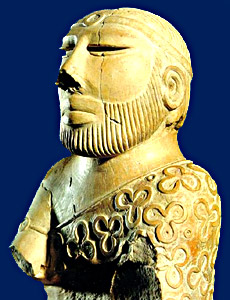 The Indus Valley Civilization was the first substantial urbanised culture of South Asia. It had reached its pinnacle from approximately 2600 B.C. to 1900 B.C., a period that is referred to by some archaeologists as "Mature Harappan", as differentiated from the earlier Neolithic "Early Harappan" regional cultures. Spatially, the civilisation was colossal, consisting of more or less 1000 settlements of varying sizes and geographically including nearly all of modern Pakistan, parts of India as far east as Delhi and as far south as Bombay, along with parts of Afghanistan. The Indus script, as such, assumes prime importance when spoken about the populace`s daily life, including politics, society, administration, literature, prayers, festivities, economics or death.
The first publication of Indus script in the form of a Harappan seal dates back to 1873, in the mould of a drawing by Alexander Cunningham (British archaeologist and army engineer, acknowledged as the father of the Archaeological Survey of India). Since that period, well over 4000 symbol-bearing objects have been unearthed, some as far away to hinterlands as Mesopotamia. A few early scholars, starting with Cunningham in 1877, were of the faith that the Indus script was the original of the Brahmi script, that was employed by Emperor Ashoka. Cunningham`s ideas were supported by several other scholars and a further minority.
The Indus Valley Civilization was the first substantial urbanised culture of South Asia. It had reached its pinnacle from approximately 2600 B.C. to 1900 B.C., a period that is referred to by some archaeologists as "Mature Harappan", as differentiated from the earlier Neolithic "Early Harappan" regional cultures. Spatially, the civilisation was colossal, consisting of more or less 1000 settlements of varying sizes and geographically including nearly all of modern Pakistan, parts of India as far east as Delhi and as far south as Bombay, along with parts of Afghanistan. The Indus script, as such, assumes prime importance when spoken about the populace`s daily life, including politics, society, administration, literature, prayers, festivities, economics or death.
The first publication of Indus script in the form of a Harappan seal dates back to 1873, in the mould of a drawing by Alexander Cunningham (British archaeologist and army engineer, acknowledged as the father of the Archaeological Survey of India). Since that period, well over 4000 symbol-bearing objects have been unearthed, some as far away to hinterlands as Mesopotamia. A few early scholars, starting with Cunningham in 1877, were of the faith that the Indus script was the original of the Brahmi script, that was employed by Emperor Ashoka. Cunningham`s ideas were supported by several other scholars and a further minority.
The main corpus of writing in Indus script dating back from the Indus Civilization is in the form of approximately two thousand inscribed seals in sound, decipherable conditions. Indeed, it can very well be acknowledged that the scriptural characteristics in Indus script calls for pretty disputations and theories, owing to the almost unfathomable nature in writing, with scholars and discoverers hell-bent to unearth all of them.
Inscription Corpus in Indus script
Inscriptional mass in the Indus script is distinctively divided into sub-sections of Early Harappan, Mature Harappan and late Harappan epochs. Indeed, Harappan civilization was and still is one and the same with Indus Valley civilization, Harappa serving as a significant portion in the colossal Indus population. As such, the inscription format emoted certain definitive difference during the early, mature and later stages in Harappa.They can be elucidated as:
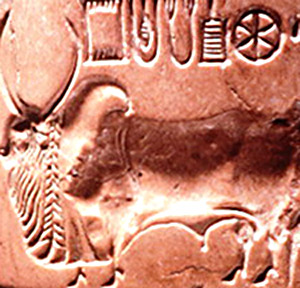 Early Harappan or Indus script usually pertains to that utilised during the mature Harappan phase. Early Harappan conceivably had germinated from a few signs found in early Harappa after 3500 B.C. and was succeeded by the mature Harappan script.
Early Harappan or Indus script usually pertains to that utilised during the mature Harappan phase. Early Harappan conceivably had germinated from a few signs found in early Harappa after 3500 B.C. and was succeeded by the mature Harappan script.
Mature Harappan or Indus scriptural symbols are most commonly affiliated with flat, rectangular stone tablets referred to as seals; but they are also discovered on at least a dozen other materials besides stone.
Finally, the later Harappan age was ushered in precisely after 1900 B.C. The methodical and organised usage of the symbols came to an end, after the final stage of the Mature Harappan civilization (that is unanimously associated alongside Indus Valley civilization). A few Harappan signs come to view until as late as about 1100 B.C. (the commencement of the Indian Iron Age). Onshore explorations near Bet Dwarka in Gujarat uncovered the existence of late Indus seals, portraying a 3-headed animal, earthen vessel engraved in a late Harappan script and a huge quantity of pottery. The unearthed pottery bore similarity to Lustrous Red Ware bowl and Red Ware dishes, dish-on-stand, punctured jar and incurved bowls, which are dated back to 16th century B.C. in Dwarka, Rangpur and Prabhas. The thermo-luminescence date (the determination by means of measuring the amassed radiation dose of the time elapsed since material containing crystalline minerals was either heated (lava, ceramics) or exposed to sunlight sediments) for the pottery in Bet Dwaraka is fixed at 1528 B.C. This data hints that a late Indus or Harappan script was employed until around 1500 B.C. Other excavation works in India at Vaishali, Bihar and Mayiladuthurai, Tamil Nadu have uncovered Indus symbols being utilised as late as 1100 B.C.
